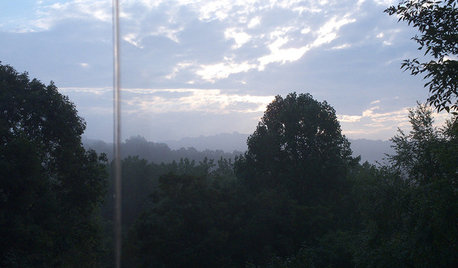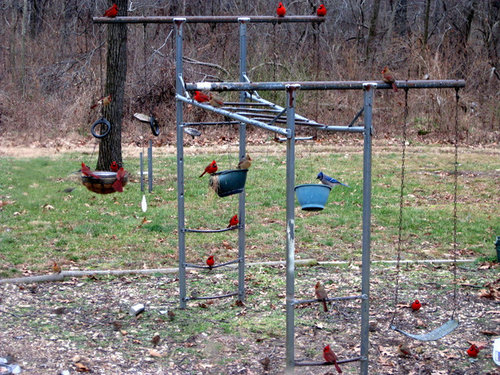What happened to the cardinals?
mulberryknob
10 years ago
Related Stories

GARDENING GUIDESBackyard Birds: Northern Cardinals in the Snow, and Other Red Birds
Brilliant crimson feathers make these friends stand out in a crowd
Full Story
MODERN ARCHITECTUREKeep Your Big Windows — and Save Birds Too
Reduce bird strikes on windows with everything from architectural solutions to a new high-tech glass from Germany
Full Story
ARCHITECTURE4 Things a Hurricane Teaches You About Good Design
When the power goes out, a home's design can be as important as packaged food and a hand-crank radio. See how from a firsthand account
Full Story
GARDENING GUIDESGarden-Friendly Native Alternatives to Overplanted Exotics
There are lots of gorgeous, wildlife-friendly native plants ready to make an appearance in your garden
Full Story
GARDENING GUIDESWhat’s in a Name? See 6 Wildflowers That Aren’t ‘Weeds’ at All
Dispel the stereotypes of weeds and try these wildlife-supporting native wildflowers in your garden
Full Story
FURNITUREAntiques Shopping? Let Love Guide Your Search
If discovering aged treasures is your passion, you’re not alone. Find a kindred spirit and his buying tips here
Full Story
GARDENING FOR BIRDSWild Birds Transform a Woman’s Garden and Life
How Sharon Sorenson created a wildlife haven and became the Bird Lady of Southern Indiana
Full Story
GARDENING FOR BIRDSWhat to Know About Birds Nesting in Your Yard
Learn how to observe, record data and help ornithologists with NestWatch’s citizen science project understand bird trends
Full Story
GARDENING FOR BUTTERFLIESA Quick-Start Guide to Bird-Watching for Fun and Learning
Set out some seed and grab your field guide. Bird-watching is an easy, entertaining and educational activity for the whole family
Full Story
BATHROOM DESIGNExpert Talk: Frameless Showers Get Show of Support
Professional designers explain how frameless shower doors boosted the look or function of 12 bathrooms
Full StorySponsored
More Discussions







mksmth zone 7a Tulsa Oklahoma
Okiedawn OK Zone 7
Related Professionals
Canton Landscape Architects & Landscape Designers · La Marque Landscape Architects & Landscape Designers · Westwood Landscape Contractors · Athens Landscape Contractors · College Park Landscape Contractors · Coram Landscape Contractors · Fishers Landscape Contractors · Hawthorne Landscape Contractors · Melrose Park Landscape Contractors · Northport Landscape Contractors · Riverview Landscape Contractors · Santa Ana Landscape Contractors · Watertown Landscape Contractors · Glasgow Decks, Patios & Outdoor Enclosures · Verde Village Decks, Patios & Outdoor Enclosureschickencoupe
dbarron
mulberryknobOriginal Author
Okiedawn OK Zone 7
lat0403
mulberryknobOriginal Author
Okiedawn OK Zone 7